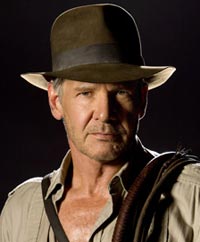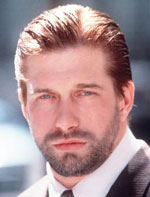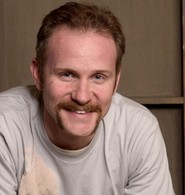 What’s with all the negative reviews for “Indiana Jones and the Kingdom of the Crystal Skull”? It’s almost as if all of these critics have gotten older over these last 19 years!
What’s with all the negative reviews for “Indiana Jones and the Kingdom of the Crystal Skull”? It’s almost as if all of these critics have gotten older over these last 19 years!
I think the most profound revelation about the response to the current Indy flick is that we have all gotten older and our culture is much more cynical. We can’t do much about the first, but I would hope we could change the trajectory of the second. I think this movie was a step in the right direction.
Consider these comments which reflect much of what reviewers have said:
David Denby, in The New Yorker, said “‘Crystal Skull’ isn’t bad— there are a few dazzling sequences, and a couple of good performances— but the unprecedented blend of comedy and action that made the movies so much more fun than any other adventure series is mostly gone.”
And from Lisa Kennedy, in The Denver Post: “Ultimately, ‘The Kingdom of the Crystal Skull’ is instant artifact. It’s a vessel with a great deal of pictorial images on its surface. But its contents are long gone.”
Rolling Stone Magazine’s Peter Travers said “‘Crystal Skull’ is hit-and-miss like the clunky 1984 sequel, Temple of Doom. And instead of the elegiac tone that lifted 1989’s presumptive valedictory, ‘The Last Crusade,’ director Steven Spielberg and producer George Lucas have gotten sillier.”
And the New York Observer’s Rex Reed lamented “It’s as contrived and convoluted as all the other ‘Indiana Jones’ movies, but not as much fun.”
Not fun? I think they’re missing the point. The original three put Indy on quests for the Ark of the Covenant and The Holy Grail, as well as some old rocks, and an alien curse. He ran into Hitler, we met his dad, he lost his first love, and we met him as a young man. How is it any less fun for him to come into contact with the major elements of the 1950’s in America: Cold War, FBI paranoia, nuclear testing, and that alien incident? And the true nature of Indiana Jones’ underlying commitment to the ethics of archeology and to loyalty in relationships is raised even higher in this film, complete with his loyalty to “Ox” and discovery of his first love and his son.
George Lucas and Steven Spielberg took an old idea and made it current. Harrison Ford brought an honest Indy who was authentic about his age and stage of life. The opening scene’s music and players set the immediate stage long before the “Nevada, 1957” graphic showed, and our first look at Indy was reminiscent of each of the prior flicks as a prior Indy event was ending as our current one was commencing. An eighties pessimist could have panned the originals as much as this year’s plot idea, but we were either more willing to explore back then or more willing to believe in heroes. If we’re not ready to be inspired—or at least to give the benefit of the doubt—then we may be in worse trouble than we think.
Yes, “Indiana Jones and the Kingdom of the Crystal Skull” may not deserve four stars like the original, but I think our culture is a one-and-a-half star culture in need of leaders we can trust, and a plotline that shakes us out of our current woes. I hope the studio execs—as well as those in the music, literary and stage worlds—will take notice. Otherwise, I’ll look forward to Indy 5, when Henry Jones, Jr. will meet the Beatles and catch a ride on Mercury 7!


